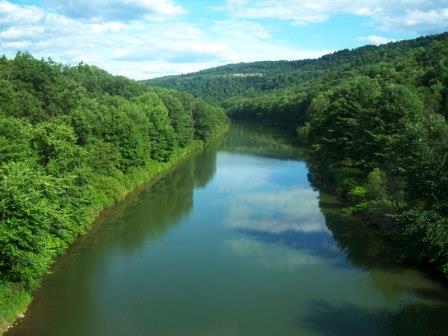HARRISBURG – The Department of Environmental Protection (DEP) has released the 2013 Susquehanna River Sampling Report, detailing the latest results from the aggressive sampling effort across the Susquehanna River and many of its tributaries.
“Our efforts on the Susquehanna River over the past two years represent an unprecedented amount of study. The agency has dedicated a great amount of staff time on this river,” DEP Secretary E. Christopher Abruzzo said. “We are learning more every day, but there is still work to be done.”
During the 2013 sampling season, DEP staff spent 927 staff working days collecting samples on the river.
Major sampling sites included the Susquehanna at Marietta, Harrisburg and Sunbury, and the Juniata at Lewistown Narrows andNewport. There were control sites on the Delaware at Trenton, the Allegheny at Franklin and the Youghiogheny at Sutersville to establish a baseline for water quality.
DEP staff tested for various parameters including nutrients, metals and emerging contaminates in the water column and sediment. This included tests for hormones, pharmaceuticals and pesticides. Staff also deployed continuous in-stream data monitors and sampled benthic macro-invertebrates, fish, mollusks, and algae.
Dissolved oxygen levels and pH across all Susquehanna River sites were acceptable compared with the current dissolved oxygen criteria. Phosphorus, nitrogen and nitrate levels were higher at the Delaware River control site than at any site in the Susquehanna River. Within the Susquehanna River Basin, sample results for these pollutants were higher at the Juniata River sites.
Based on fish tissue data collected, the lower main stem of the Susquehanna River will be added to the fish consumption impairment list for channel catfish larger than 20 inches due to Polychlorinated biphenyls (PCBs) in the fish tissue. The recommended consumption is no more than one meal per month.
In 2013, sample collection was at times difficult due to many heavy rain events. These rain events maintained relatively high river flows throughout the summer diluting nutrients and contaminants. Critical low summer flows did not occur in 2013.
This exhaustive study of the Susquehanna River is in its third year. Sampling for the 2014 season began in April and will continue through the fall.
DEP will hold a webinar to discuss the results of the Susquehanna River Study on May 28 from 2 to 3 p.m.
For more information, or to register or the webinar, visit www.dep.state.pa.us and click on the “Susquehanna River Updates” button.
